How to Read a Water Meter: A Detailed Guide to Reading and Transmitting Flow Meter Readings
To account for used water, special devices are installed in apartments and private houses.By transmitting the readings taken at a certain time, control is made over the resource consumed, and then payment for it is made.
In this material we will analyze in detail how to take water meter readings, avoid making mistakes in calculations and transfer the data to the supplier company on time.
The content of the article:
Advantages of installing water meters
First, let's figure out whether it makes sense to install metering devices - some residents still pay utility bills at general rates.
If you have installed meters and doubt that you did it right, just compare your bills with the receipts of your neighbors who are still delaying the installation. The amounts indicated in the payment column are the best argument in your favor. They are approximately 1.5-2 times lower than those stated by residents who have not yet installed water meters.
Have you also thought about purchasing and installing metering devices? We recommend that you familiarize yourself with the procedure and rules for installing meters.
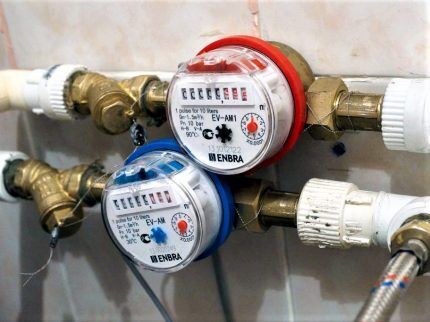
In the same receipts you can find the amount of resource consumed and be surprised how much water we waste.
It is estimated that every month the average resident of a comfortable city apartment performs the following actions:
- Flushes the toilet 118 times;
- uses the sink 107 times;
- takes 25 showers;
- washes in the bathroom 4 times;
- Wash dishes 95 times.
As a result, it spends approximately 2-4 m³ of cold water and 1-3 m³ of hot water. Considering that families often have 2 or more people, the amounts are impressive. And this - if you take readings from the meters, without them you have to pay even more money.
If you look at all the nuances of payment with and without devices, you can come to the conclusion that installing water meters brings only advantages:
- you can control the cubic meters spent;
- easy to save your family budget;
- you do not need to make payments if you are absent for a long time, or prove your absence;
- there is no need to pay the debts of irresponsible neighbors and pay interest for the increasing coefficient.
And one more plus related to nature conservation in general and saving water resources in particular. Knowing your monthly expenses for water supply, you can learn to be more careful with water and gradually reduce your consumption - within reasonable limits, of course.
How to take readings correctly?
In order to regularly pay for used water, it is necessary to perform a kind of “ritual” every month, on the same dates, which includes the following actions:
- receiving a receipt;
- taking readings from metering devices;
- entering data into the receipt (when transmitting information by phone or Internet, this item is not needed);
- payment for the actual quantity used.
Depending on who is involved in generating utility bills, there are different methods of transmitting data. But first things first.
Analysis of the design of a water meter
To understand how to correctly take readings from a water meter, you need to understand its design, or more precisely, study the display - the top panel covered with transparent plastic.
The main element that you will have to “work with” every month is a digital scale, the same as that of an electric meter. Almost all tachometer instruments are equipped with a roller scale - the most popular due to their simple design, accuracy and low cost.
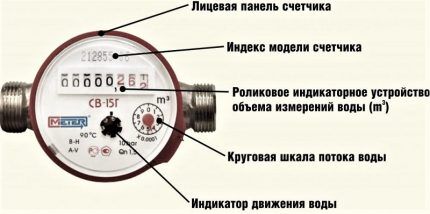
In addition to mechanical models, there are electronic ones in which the roller scale is replaced by a display. They are more expensive than conventional models, and they are also energy-dependent - they often operate on a battery.
We talked more about the types of water meters and the rules for choosing them in this article.
Before taking readings, you need to accurately determine which water meter is installed on the hot water pipe and which one is installed on the cold pipe.
There are several ways to find out:
- use color coding – the housing of meters for cold water is usually painted blue (as is the edging of the display), for hot water – red;
- find the letter marking – hot water supply/hot water supply or water supply/water supply;
- touch the pipe with your hand – the DHW main is always warm (except for periods of summer shutdown);
- open the tap and determine by the rotating indicator.
Traditionally, hot water pipes are laid on top, therefore, DHW meters are installed in the top position. Unfortunately, not all plumbers comply with generally accepted requirements, so when using this method of determination, you can make a mistake.
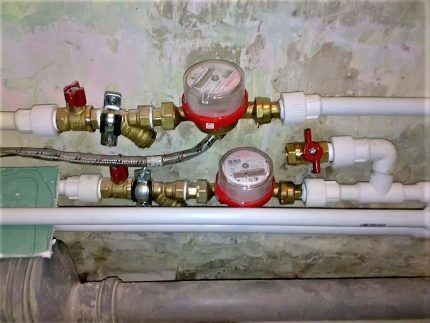
To conveniently take readings, water meters must be installed in a visible area - on an open section of a water supply pipe or under a plumbing hatch cover. Both devices should be facing the light source.
What numbers are important for the calculation?
Having decided whether the devices belong to hot and cold water supply, you need to write down the actual numbers - those indicated on the scale or display. And before that, you will have to figure out which numbers need to be counted on both water meters, and which ones do not need to be taken into account.
The scale of a simple tachometer device includes 8 rollers, that is, it shows 8 numbers: the three rightmost ones indicate consumed liters, the rest - cubic meters.
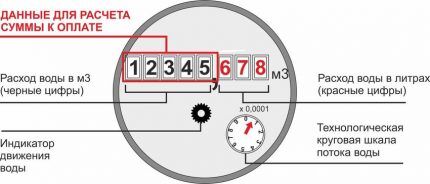
However, there are counters whose display differs in the total number of digits or the number of digits after the decimal point. In this case, you need to consult a specialist who installs meters or a representative of the service company who performs the sealing.
Is it possible to round off readings? This is allowed, up or down. Typically, if the red numbers reach the value “600”, the number is increased by 1, that is, liters are rounded to the cube.
Reading example:
Let's assume that the next number on the dial of the cold water meter is 00076.268. We write down only “76” on the receipt.Let's assume that next month the readings are 00084.896. We round and write “76” in the column for the last month, and “85” for the current month. The difference is 9 m³.
To understand how much you need to pay for consumed water, we multiply the cubic meters spent by the regional tariff, let’s assume 34.5 rubles/m³. It turns out 310.50 rubles - that’s what you’ll have to pay for cold water.
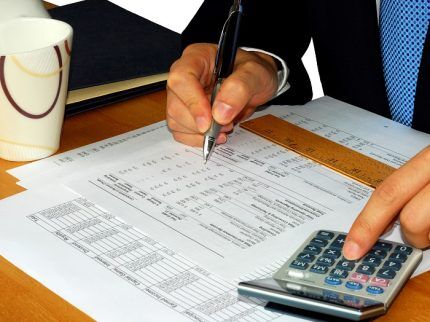
We discussed the specifics of calculating water consumption in more detail in another our article. Having figured out what numbers need to be supplied to water meters, all that remains is to choose the most convenient method of transmission, if there are several of them.
Methods and timing for transmitting evidence
Thanks to the development of communication networks, users are provided with many ways to transmit monthly water consumption data.
All methods can be divided into 3 large categories:
- telephone message;
- transfer of readings via the Internet;
- submission of data on paper – receipts.
But first you need to understand where to send the readings taken: to the management company, housing department, the main entrance or directly to the branch of the supplier company. It is better to check this information with a representative of the service organization.
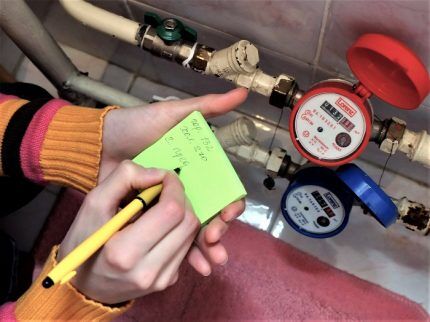
Popular ways to save time:
To transfer meter readings using the listed methods, you do not need to make calculations - usually you only need to transfer current readings, in some cases, along with data for the last month.
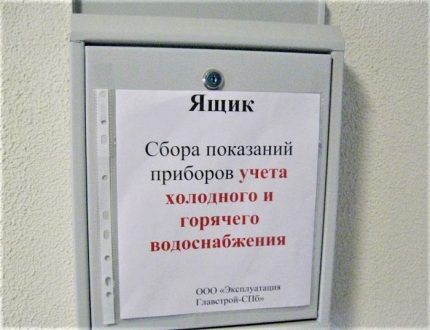
The most inconvenient way is to walk to the nearest branch of Gorvodokanal. But older people often choose it in order to once again go outside and communicate with people.
Data transfer times vary in different regions. Usually these days are from the 23rd to the 25th or 26th of each month. The exception is pre-holiday days, for example, before the New Year the deadline can be moved to the period from December 19 to 22.
The recommended period for transmitting readings is indicated on the receipts.
Recommendations for reducing water consumption
Utility bills significantly devastate a family’s budget, especially in winter, when you also have to pay for heating. To reduce the amount, you can save on paying for water supply services by reducing water consumption, as well as reduce heating bills, installing a heating meter. But how can you reduce your water consumption?
The numbers on the meter will be lower if you follow the following recommendations:
By purchasing drinking water, you will reduce your tap water consumption by approximately 40-60 liters per month per person. True, you won’t be able to save money on this, but you can improve your health.
You should not lose sight of such “little things” as lime or rust stains in the toilet bowl or sink. They signal regular leaks.
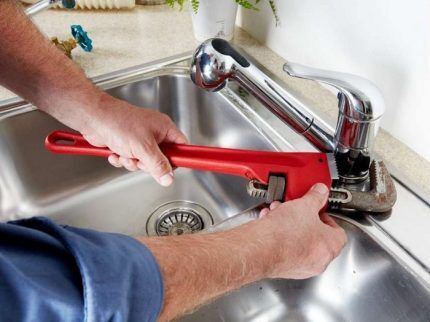
Even in a small apartment there are at least 2 taps installed, in the kitchen and in the bathroom, and a toilet. If they leak, then the monthly volumes of wasted water will definitely affect the payment for utilities.
We looked at more ways to reduce water consumption in next article.
If water meters have not yet been installed in your apartment, you are guaranteed to overpay. Take action to fix this problem immediately! Step-by-step instructions for installing metering devices brought here.
Conclusions and useful video on the topic
The user shares his personal experience:
Receipt filling option:
There is already experience in using “smart meters” - electronic devices that transmit readings directly to the user’s phone or the computer of a specialist from a service company.
Perhaps in the near future all homeowners will be freed from the obligation to provide monthly water metering data; automatic devices will do this for them.
Do you still have questions about taking and transmitting readings from a cold and hot water consumption meter? Ask them under this article - other site visitors and our experts will try to clarify any unclear points for you.
If you have a smart meter installed that automatically transmits readings to the service company, please share your impressions of using it and add a photo of your device.




The most “consumable” device in terms of water is the toilet. The average family empties a five-liter tank at least 10 times a day. So do the math.A tank with separate large and small flush buttons will help you save money. It costs more, of course, but quickly pays for itself. Of course, this only matters for those who pay according to the meter, and not according to average rates.
Honestly, the statement that water consumption according to meters is always less than according to standards, and, accordingly, it is more profitable to have meters, is very, very controversial. The only advantage of meters is that you always know exactly and can control the amount of water consumed. I also noticed that a very high consumption of hot water occurs in those houses where it is actually warm, much lower than the temperatures prescribed in the technical regulations for hot water supply. Naturally, in such a house the hot tap opens to a higher degree. Therefore, for those who are looking for ways to save water consumption, I advise you to pay attention to the temperature of your hot water supply and “fight” with your water supply system if the degrees are below normal.
Payment by meters is more profitable in 99% of cases. In addition, there will always be a particularly cunning person who will be registered in an apartment alone and will pay according to the standards for one, and live almost like a gypsy camp. Do you want to pay for these? Without meters, all unpaid expenses would be divided among neighbors.
Here I agree with you, but partially.
Firstly, there are people in whose apartments one person is registered, but two, three or more live. There is nothing unusual here, no one is stopping the owner of the apartment from reporting the fact that there are more tenants than registered, and paying fairly after that. The fact that few people do this is a moral issue, not a technical one.
Secondly, how does the absence of a meter oblige other neighbors to pay for unpaid water consumption? I don’t see the logic in this, to be honest: if you have a meter installed, you pay exclusively for the water used; what your neighbors do there without a meter is none of your business. It’s the same story, if no tenant has a meter installed, payments are made strictly according to the tariff, which is calculated according to the number of registered people in the apartment.
I have not been able to transmit instrument readings for three months. There is so much hype on the Internet that nothing is clear. Please help me determine my password and login. It used to be easier - I dialed the account number and last name - the issue was resolved! And now, for us, pensioners, the innovation you introduced is incomprehensible. Please provide clarification. My phone number is +79235714092.
Sincerely Furman V.A.